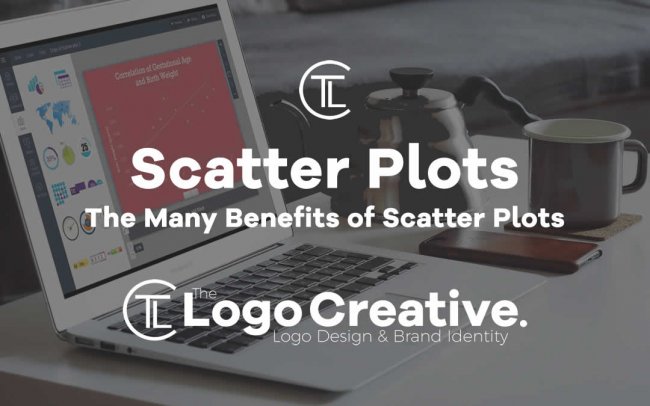We’ve written at length in the past about how you can never really have too much of a visual element in the world of business, both internally and externally as far as marketing as concerned. in this article we discuss The Many Benefits of Scatter Plots.
When it comes to the type of collateral that you’re creating that will eventually reach your customers, visual elements like Infographics, presentations, videos monetized on sites like Uscreen and others are a perfect opportunity to take complex ideas, condense them down to their core essentials and present them in a visual way that is almost effortless to digest.
The same is true internally, too. If you want to better illustrate the relationships between certain consumer trends, if you’re trying to show people what your vision is for the company for the next decade or even if you just want to dive deep into what certain consumer interactions really mean for what you’re doing every day, visual collateral is a really great way to do it.
Scatter plots also happen to be a great way to accomplish both of these goals, as well.
Scatter Plots Are All About Relationships
Scatter plots are often referred to by a variety of names, but one of the most common is the scatter graph. It’s a very particular type of diagram that is usually drawn with two variables, the first being independent and the second being dependent on the first.
When you sit down with a tool like Visme (which I founded) to create a scatter plot, you’re not just taking data points and visualizing them. You’re actually going a fair bit deeper than that, whether you realize it or not.
What you’re really doing is visualizing the relationship between those data points, the importance of which is something that cannot be overstated enough.
More specifically, a scatter plot is all about finding the correlation between the two variables. It helps you determine how closely two particular ideas are related, or what tangible impact that one has on the other.
But beyond that, if you’re able to predict the relationship that these two variables have, you’re also in an excellent position to turn your attention towards the future to get a better idea of what future behavior may be.
If you know how the dependent variable affects the independent one, the reverse is also true – if you know exactly how the independent variable is changing, you, therefore, know what is going to happen with the dependent one.
To distill this down to an (admittedly) simple example, consider a scatter plot with two variables: the price of your product and the number of people who buy it. Once you input the appropriate data from your own internal systems, you notice that as the price of your product increases, fewer people are likely to make a purchase.
Once you know that, you essentially know everything. You can keep experimenting, looking at ways to increase the price as high as possible before you start to eat into not the total number of sales you’re making, but the total amount of revenue that those sales are generating.
You can see the perfect price (or close to it) in order to generate as many sales as possible. You don’t just explain the relationship between these two variables – you predict how one changes as the other does the same.
Again, once you know more about the relationship between these two ideas, you essentially know it all.
Scatter plots can also be a perfect opportunity to prove or disprove the relationship between two variables, as well. According to most experts, there are three main types of scatter plots to concern yourself with:
- Those with absolutely no correlation to speak of.
- Those with what you might call a “moderate” correlation.
- Those with a very strong correlation.
Provided that the quality of the data that you’re using to build your scatter, plot is as high as it can be, you can finally settle old arguments and determine whether Variable X actually has the impact on Variable Y that certain people seem to think it does.
The same is true of using scatter plots in your outward-facing efforts, too – namely, you’re marketing. You could use scatter plots in your marketing collateral to visualize the relationship between your product and the lives of your customers.
You can better show the direct impact your product has had on the people you’re trying to help and the problems that they’re now able to solve. You can put proof right in front of their faces and objectively say “this is what we were able to do and here is how your life is now better than it was before.”
In terms of a marketing message that will resonate with a large group of people, it really is hard to get much more compelling than that.
Diving Beneath the Visualization
Yes, visualization is important in the world of business – it always has been, it always will be. Human beings are visual learners by design and sometimes people just “get” ideas better if they’re presented in a visual way than if they had been exposed to those ideas through other means.
But having said that, what you’re visualizing is less important than how and why you’re visualizing it in the first place. Whether you’re trying to help improve your own internal processes or are trying to make a stronger argument in your marketing collateral, scatter plots are the perfect opportunity to visualize the important relationships that are all around us every day.
Especially when used in conjunction with other forms of collateral that you’re creating, they’re certainly the type of opportunity that you definitely don’t want to overlook.
If you would like more personal tips, advice, insights, and access to our community threads and other goodies join me in our community. You can comment directly on posts and have a discussion.
 Author Bio
Author Bio
Payman Taei is the founder of Visme, an easy-to-use online tool to create engaging presentations, infographics, and other forms of visual content. He is also the founder of HindSite Interactive, an award-winning Maryland digital agency specializing in website design, user experience, and web app development.


